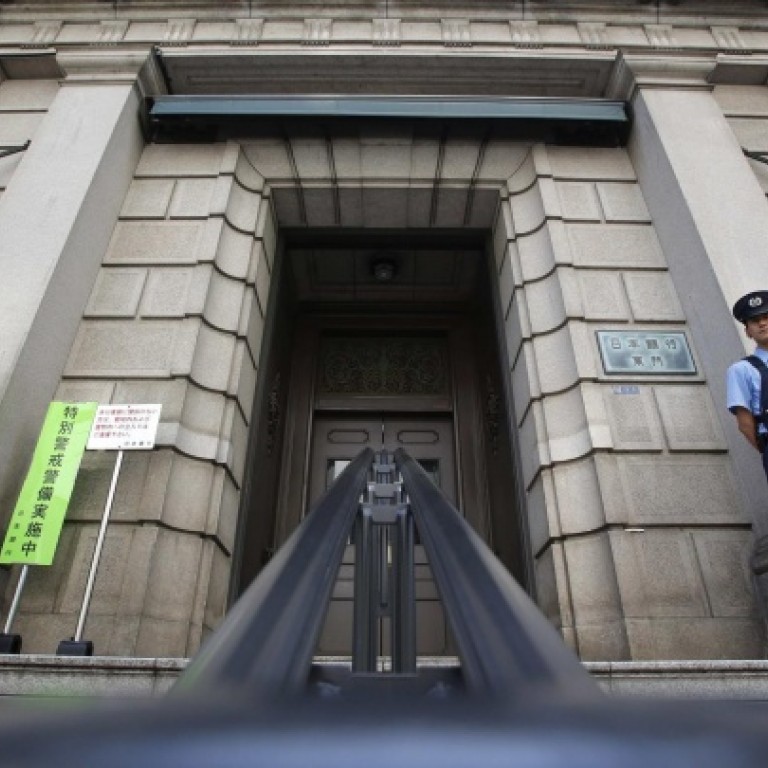
BOJ members divided over ambitious stimulus plan
Meeting minutes show a few policymakers felt it tough to achieve 2pc inflation target and concern over bond market
The minutes of the Bank of Japan's April 26 meeting showed a rift developing within the board over its ambitious stimulus plan, as a few policymakers opposed targeting 2 per cent inflation in two years and called for more flexibility in guiding monetary policy.
The board also engaged in considerable debate over the bond market volatility after the central bank's monetary easing on April 4, a sign the members were uneasy about the rise in borrowing costs that could undermine the BOJ's ultra-loose policy.
"We're still seeing potential instability in the bond market," one member was quoted as saying in the minutes released yesterday.
The bank unleashed the world's most intense burst of stimulus last month, promising to inject US$1.4 trillion into the economy in less than two years to meet its pledge of achieving 2 per cent inflation in two years.
At a subsequent meeting on April 26, it extended the period for its economic forecasts to three years and said Japan would approach 2 per cent inflation in the latter half of the three-year period to March 2016.
Among the nine-member board, former economists Takahide Kiuchi and Takehiro Sato dissented against the new forecasts on the view that they were too ambitious in a country that has been mired in deflation for 15 years.
A few members said it was tough to achieve 2 per cent inflation in the latter half of the forecast period as there is uncertainty over how changes in future inflation expectations will actually push up prices
"A few members said it was tough to achieve 2 per cent inflation in the latter half of the forecast period as there is uncertainty over how changes in future inflation expectations will actually push up prices," according to the minutes, which likely referred to Kiuchi and Sato.
One of the two said the credibility of the central bank's policy would be hurt if the central bank made forecasts bound with uncertainty and failed to achieve them, the minutes showed.
Both made unsuccessful proposals to water down the bank's commitment to meet 2 per cent inflation in two years. Kiuchi said the central bank should limit the period for committing to its ultra-easy policy for two years, and review it thereafter to see whether it should be sustained.
At the April 26 meeting, the bank voted unanimously to stick with the massive quantitative easing announced three weeks earlier, in which it pledged to double its Japanese government bond holdings in two years as it expands the supply of money at 60 trillion (HK$4.58 trillion) to 70 trillion yen a year.
While the aggressive stimulus has sent stocks soaring to 51/2-year highs, the massive scale of the bank's bond buying jolted the bond market and nudged the 10-year yield to its highest level in a year last week, casting a cloud over the effectiveness of the easing.
On Sunday, bank governor Haruhiko Kuroda said the country's financial institutions had sufficient buffers against losses they might incur from rises in bond yields, as long as the market moves were driven by prospects of an economic recovery.
Kuroda said the central bank would also be vigilant to any signs of overheating of asset prices or excessive risk-taking by financial institutions, adding that there were no signs of that now.

